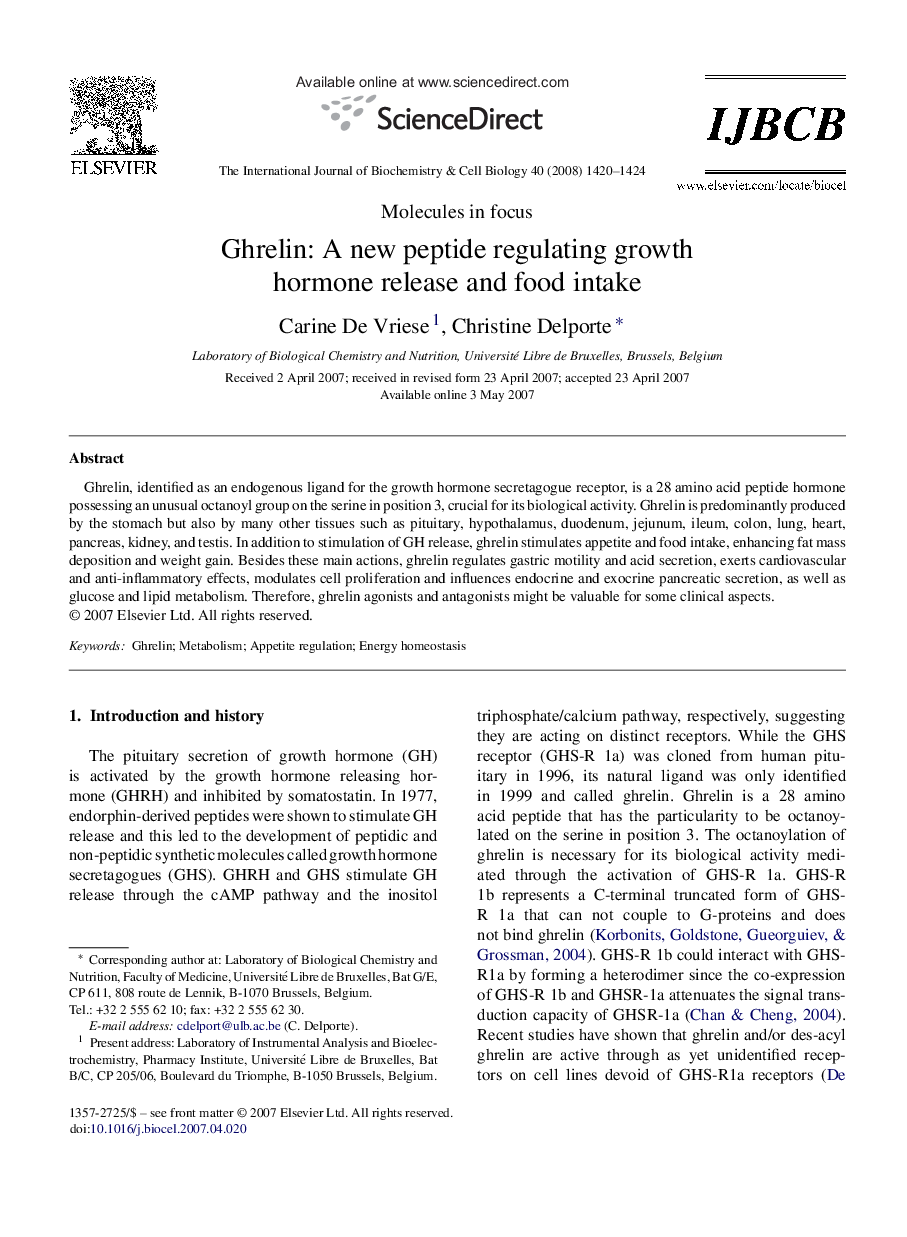| Article ID | Journal | Published Year | Pages | File Type |
|---|---|---|---|---|
| 1984861 | The International Journal of Biochemistry & Cell Biology | 2008 | 5 Pages |
Abstract
Ghrelin, identified as an endogenous ligand for the growth hormone secretagogue receptor, is a 28 amino acid peptide hormone possessing an unusual octanoyl group on the serine in position 3, crucial for its biological activity. Ghrelin is predominantly produced by the stomach but also by many other tissues such as pituitary, hypothalamus, duodenum, jejunum, ileum, colon, lung, heart, pancreas, kidney, and testis. In addition to stimulation of GH release, ghrelin stimulates appetite and food intake, enhancing fat mass deposition and weight gain. Besides these main actions, ghrelin regulates gastric motility and acid secretion, exerts cardiovascular and anti-inflammatory effects, modulates cell proliferation and influences endocrine and exocrine pancreatic secretion, as well as glucose and lipid metabolism. Therefore, ghrelin agonists and antagonists might be valuable for some clinical aspects.
Related Topics
Life Sciences
Biochemistry, Genetics and Molecular Biology
Biochemistry
Authors
Carine De Vriese, Christine Delporte,
